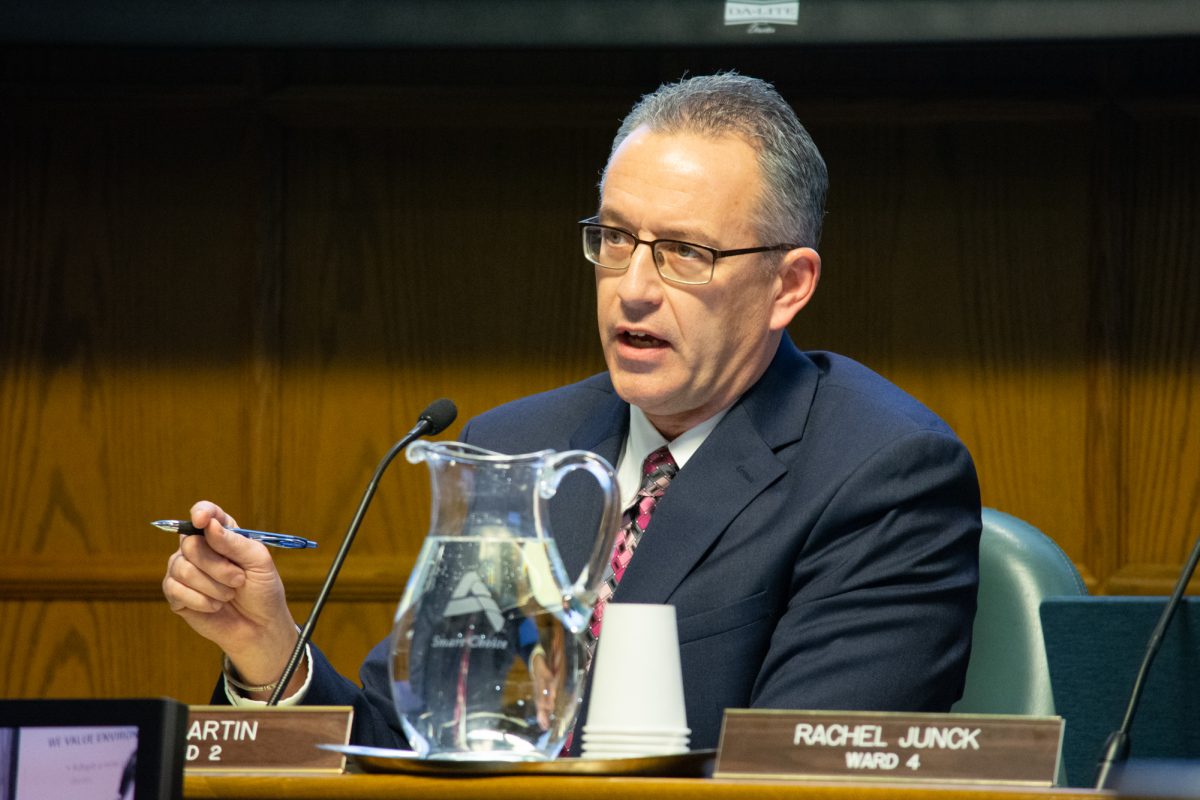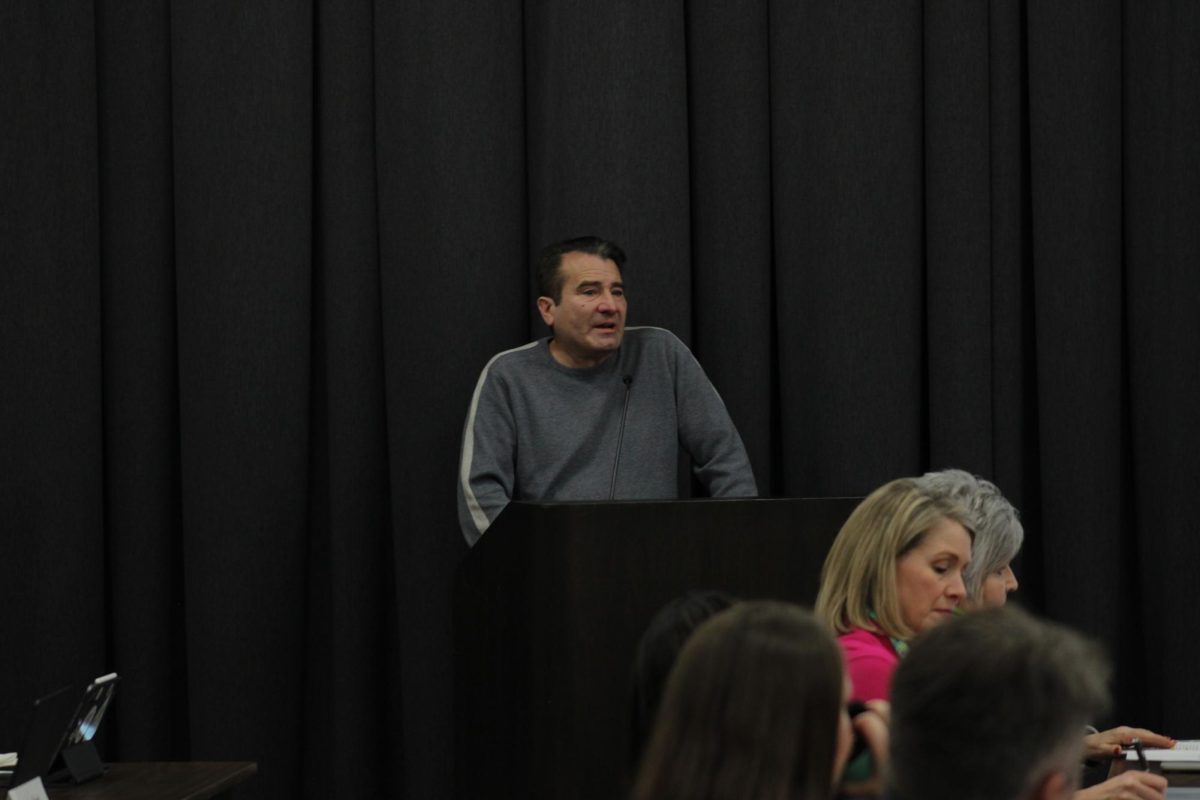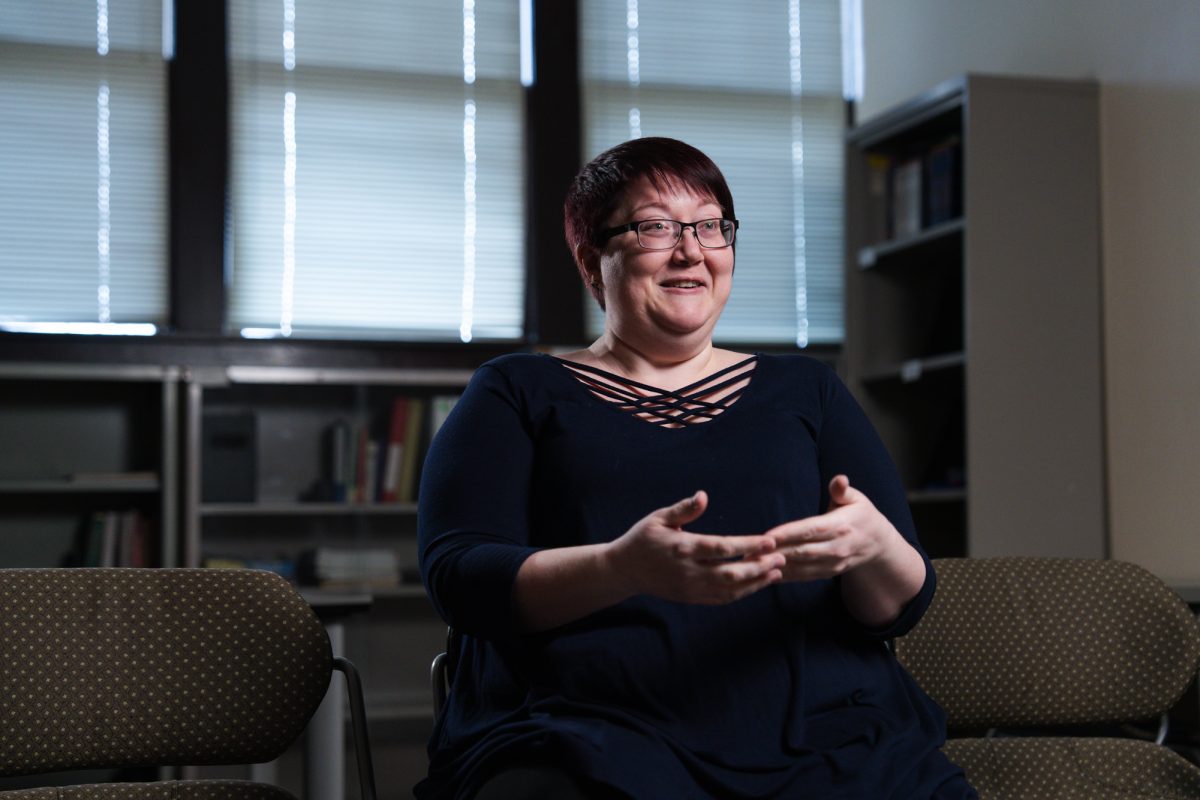Living in the lion’s den: Housing demands prompt IRHA recommendation
Jessica Darland/Iowa State Daily
Dakota Pratt, sophomore in interdisciplinary studies, Sarah Hetrich, who is an open option in LAS, Madison Jordan, freshman in psychology, and Brenna Sweeny, freshman in human sciences all live together in a den on the second floor of Helser. They have been told that they have to find a new place to live next semester. “We really like staying in a den. We tried to ask them, but they said we couldn’t and we had to move out, but we’d rather stay here the whole year so we wouldn’t have to move all our stuff,” says Jordan, “I feel like we have a lot of room. Even when there was four of us there’s still a lot of room.” The girls have a counter space where they keep snacks and kitchen supplies, as well as a large area and shelf in a corner for their TV. “Having to move and knowing it’s only temporary and not something where you can stay is probably the worst part,” says Hetrich. All four residents have found a new place to live next semester.
December 5, 2014
Most students sign housing contracts knowing they will have a place to stay for the duration of the academic year. However, most students assigned to residence hall dens this fall knew they’d have to move out before the spring semester.
“We were told when we got our assignments that we’d have to be out at semester,” said Timothy Pollock, a freshman in pre-business and a resident of fifth floor Larch.
It’s no surprise that increased enrollment and occupancy has placed a strain on the university housing system over the past few years. Dens were added as a housing option this year to alleviate the stress on the system while still allowing students to have an on campus living experience.
While considered a temporary fix at the time, dens may become a permanent choice for housing next year due in part to a recommendation by the Inter-Residence Hall Association.
The IRHA passed a resolution on Nov. 14 recommending that den space in most residence halls, excluding Birch-Welch-Roberts and Helser, be used to house students with the caveat that students must be able to reside in the dens for the whole year.
“The recommendation is just for the next academic year,” said Sidney Pezley, president of IRHA.
Pezley went on to say that the Birch-Welch-Roberts and Helser residence halls were excluded from the recommendation due to a lack of other common spaces in these halls.
“We’ve been getting feedback from the students all semester long,” Pezley said.
The IRHA has worked with representatives from residence halls to get a feeling for what students thought was the best way to utilize den spaces. Pezley said that while students noted community space was important, they felt that having their peers living in the den spaces was more so.
Pete Englin, director of residence and an adviser to the IRHA, said he was happy to see a collective effort by the student body to voice their opinion on housing issues.
“We wanted them to tell us how they wanted their communities used,” Englin said.
The recommendation is effective as it will add an additional 332 beds to on-campus housing next fall. The extra beds will quell some of the questions about housing, especially considering that the forecast for demand for on-campus housing next year exceeds capacity by 1,800 students. Between the added den space and the prospected renewal of leases on the Maricopa-Walton complex and Legacy tower, Iowa State should be able to meet the demands of the forecast.
“We need a little more time,” Englin said as to when he thought the housing demand would level out.
Englin said this isn’t the first time Iowa State has seen a jump in enrollment, saying that right now is a time of transition. The university and Ames as a whole is experiencing some growing pains, especially in the housing sector, due to the large influx of students. Englin said that he predicts an equilibrium between housing demand and availability is just around the corner, only 18 to 24 months away.
“I didn’t know what to expect, but we got along,” Pollock said in reference to him and his roommates living in his den.
Pollock said that overall he enjoyed the den experience. While he didn’t agree with the IRHA recommendation because he thought there was a larger need for common space, he thought the university was doing the best job it could to accommodate students and address the housing need.
While not all parties can be pleased simultaneously, Pezley said the recommendation does express the opinion of most students in residence halls when it comes to den usage.
“It’s a reasonable compromise given the types of communities,” said Englin.
While not a long term solution, the IRHA recommendation will allow for a little bit of breathing room this coming fall. It will also give students the opportunity to live on campus should they please without having to worry about moving at the end of the fall semester.







